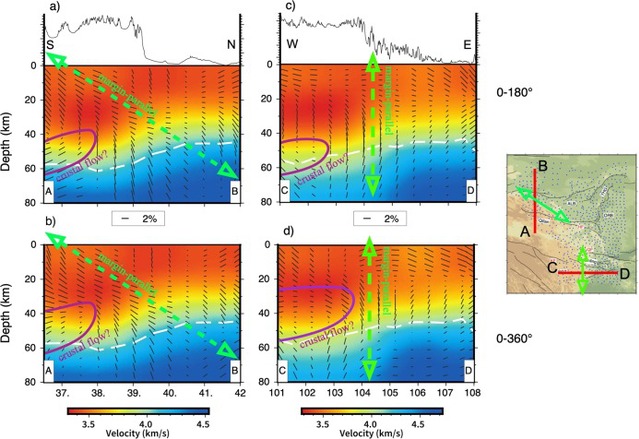作者: Hao, S., Huang, Z., Han, C., Wang, L., Xu, M., Mi, N., Yu, D.
刊物信息: Earth and Planetary Science Letters, 2021, 563, 116891.
DOI: 10.1016/j.epsl.2021.116891
摘要:The uplift of the Tibetan Plateau in the Cenozoic has greatly affected the tectonics in Asia. But the evolution of the plateau is still unclear. The northeastern Tibetan Plateau is under ongoing expansion and is therefore essential for understanding the tectonic evolution of the plateau. Using data from 675 stations deployed by the ChinArray project, we obtained an anisotropic shear-wave velocity model by Rayleigh-wave phase-velocity Eikonal tomography and further investigated layered anisotropy and deformation patterns in the northeastern Tibetan Plateau. In the upper crust (<20 km depth), the fast directions are parallel with major strike-slip faults. In the lower crust, the fast directions are mostly margin-parallel along the plateau margin (at depths of ∼20 km to Moho), but they are perpendicular to the plateau margin while parallel to the topographic gradient under the high plateau (at depths of ∼40 km to Moho). Our result indicates that there is lower crustal flow under the high plateau due to the differential lateral gravity potential. However, the deep crustal flow is blocked by the surrounding blocks, which results in pure shear along the plateau margin in the northeastern Tibetan Plateau.
